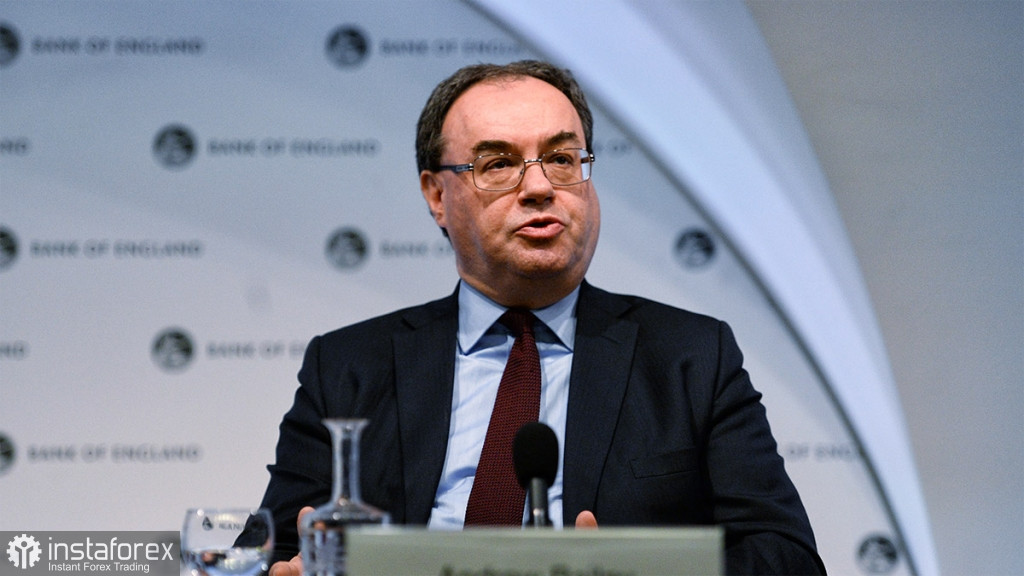The pound, quite expectedly, did not get strong support from the big players after news that the Bank of England raised its key interest rate to the highest level since 2008, saying that further hikes might be needed if inflationary pressures persist. Given that everything went within analysts' expectations, the pound reacted by slightly rising, but failed to even hit the 1.2600 level. But we will talk about the technical picture below.

The central bank of Great Britain raised its key rate by a quarter point to 4.5%, with two of the nine members of the Monetary Policy Committee voting to leave it unchanged. The majority of the meeting said that surprises indicating the economy was resilient had added to price pressures and demanded action.
Officials led by BoE Governor Andrew Bailey also presented new economic growth rate forecasts. These turned out to be the strongest since the BoE gained independence in 1997, canceling the recession forecast and expecting that by mid-2026, the real economy would be 2.25% larger than was assumed in February.
After this, money market traders revised their attitude towards rates, expecting at least two more hikes, which will total 50 basis points, further tightening the cycle. As a result, by September, the key rate will reach the 5% mark. The forecast also expects the economy to stagnate in the first and second quarters of this year, taking into account the impact of strikes and holidays related to the coronation of King Charles III, but on a base level, it will grow by about 0.2% per quarter.
According to the BoE's forecast, inflation is expected to drop to 5.1% by the end of 2023. Despite this figure being higher than the previously forecasted 3.9%, even this would be enough for the government and Prime Minister Rishi Sunak to fulfill his promise to cut inflation in half this year.
As I noted above, the rate decision continues the fastest rate hike cycle in four decades, and the BoE expects the move to have a major impact on households and firms domestically in the coming months. But given that the central bank continues to struggle with double-digit price increases, there are simply no other options.
"If there were to be evidence of more persistent pressures, then further tightening in monetary policy would be required," the BoE stated on Thursday. The tone remained unchanged compared to the March meeting, which was misinterpreted at the time as a pause in the cycle. Officials were also optimistic because the UK managed to protect itself from the problems of the banking crisis in the US.
The majority of the group members, including Bailey and two deputy governors, stated that it was important to continue to address the risk of more persistent strength in domestic price and wage setting after inflation and GDP turned out to be higher than expected. Currently, it is forecasted that unemployment will remain unchanged at 3.8% in the second quarter, which is lower than the February forecast of 4.1%.
The decision to raise rates puts the BoE on par with other banks battling high inflation. European Central Bank President Christine Lagarde sought to emphasize last week that the eurozone has not yet finished raising rates, but the ECB's main deposit rate at 3.25% is still significantly lower than that of the BoE.
As for the technical picture of GBPUSD, the bulls continue to lose control over the market, as the BoE's monetary policy meeting didn't particularly help them. In order for the pair to grow, it needs to take 1.2600. Only a breakout above this level will strengthen the hope for further recovery to around 1.2640, after which we can talk about the pound rallying to 1.2675. In case the pair falls, the bears will try to take control over 1.2550. If they manage to do so, breaking this range will hit the bulls' positions and push GBPUSD to a low like 1.2520 with the prospect of reaching 1.2480.
As for the technical picture of EURUSD, the bear market for the euro continues. To bring back the bulls, it's necessary to take 1.0940, or at least remain above 1.0910. This will allow the euro to recover to 1.0970. From that level, it can climb to 1.1000, but doing this without good fundamental data from the eurozone will be quite difficult. In case the pair falls, I only expect big buyers to be active around 1.0910. If there is no one there, it would be good to wait for a low like 1.0870 to be updated, or open long positions from 1.0840.
 English
English 
 Русский
Русский Bahasa Indonesia
Bahasa Indonesia Bahasa Malay
Bahasa Malay ไทย
ไทย Español
Español Deutsch
Deutsch Български
Български Français
Français Tiếng Việt
Tiếng Việt 中文
中文 বাংলা
বাংলা हिन्दी
हिन्दी Čeština
Čeština Українська
Українська Română
Română

